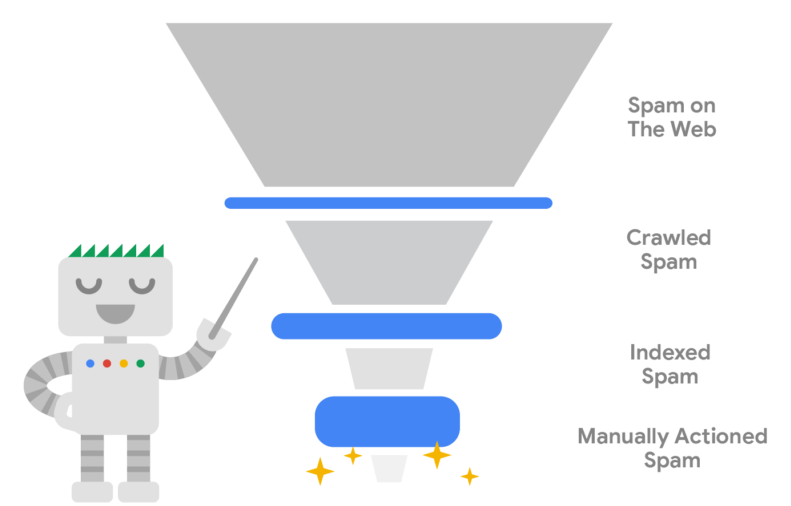
Unveiling Black Hat SEO: An Overview of Strategies, Impact on Rankings & Associated Dangers

Unveiling Black Hat SEO: An Overview of Strategies, Impact on Rankings & Associated Dangers
Disclaimer: This post includes affiliate links
If you click on a link and make a purchase, I may receive a commission at no extra cost to you.
Black Hat SEO
Contents
What’s Black Hat SEO?
Black hat SEO is a type of SEO tactic that involves activities that go against official search engine guidelines. Its main goal is to game the search engine algorithms and get the top SERP, using unethical SEO activities. Black hat SEO may sometimes bring fast results, but may result in a penalty and big financial and reputational losses.
The term ‘Black Hat SEO’ has come from the Western movies, where the villain character used to wear a black hat, as opposed to heroic characters who usually wore white hats. Thus, black hat SEO is opposed to white hat SEO, which uses only ethical and approved optimization techniques. The so-called gray hat SEO is the combination of SEO methods that go along with Google Search Essentials[1] (former Webmaster Guidelines) and those that violate them. For example, creating quality content (white hat) and buying backlinks to it (black hat).
What are black hat SEO techniques
Disclaimer: Black hat SEO techniques can get your website penalized and may harm your long-term digital marketing goals.
It’s important to understand which tactics belong to Black Hat SEO, so that you could make sure they are not part of your strategy. Below, you’ll find the description of 9 most common black hat SEO tactics.
Keyword stuffing
Keyword stuffing is a practice of adding too many keywords in your page’s content and meta tags. Keyword stuffing was a widely used technique because it yielded results, at least for a period of time.
Paid backlinks
Paid backlinks are links that a website owner pays for, as opposed to earning them through other means such as content marketing or outreach. These types of links are generally considered to be a violation of Google’s Webmaster Guidelines, which state that “any links intended to manipulate PageRank or a site’s ranking in Google search results may be considered part of a link scheme and a violation of Google’s Webmaster Guidelines.”
If you are considering purchasing backlinks for your website, it is important to be aware that Google takes a very dim view of this practice and may penalize your website if it detects that you are buying or selling links. Instead of purchasing backlinks, it is generally a better idea to focus on building high-quality, organic backlinks through content marketing, outreach, and other white hat SEO techniques.
Content spinning
Content spinning is a technique used to create new versions of existing content for the purpose of publishing it on multiple websites or for other purposes. This is often done by using software to automatically replace words and phrases in the original content with synonyms or by rearranging sentence structure.
While content spinning can be used to generate new versions of content quickly, it is generally considered to be a low-quality and unethical practice. This is because the resulting content is often difficult for humans to read and may not provide any real value to the reader. In addition, search engines like Google are designed to detect and penalize websites that engage in this type of activity, as it is often an attempt to manipulate search rankings. Instead of using content spinning, it is generally a better idea to focus on creating high-quality, original content that provides value to your readers.
Schema markup manipulation
Schema markup is a type of microdata that can be added to a website’s HTML code to provide additional context and meaning to the content on the page. This can help search engines understand the content better and provide more relevant and rich results to users.
Manipulating schema markup refers to the practice of adding or modifying schema markup in a way that is intended to deceive or mislead search engines. This could include adding false or irrelevant information to the schema markup or using schema markup to conceal low-quality or spammy content.
Private Blog Networks (PBNs)
A private blog network (PBN) is a group of websites that are used to build backlinks to a target website with the intention of improving its search engine rankings. These networks are typically made up of expired or purchased domains that are used to host content and links that point back to the target website.
Using a PBN to build backlinks to a website is generally considered to be a violation of Google’s Webmaster Guidelines, as it is an attempt to manipulate search rankings through the use of artificial or manipulated links. Google’s algorithms are designed to detect and penalize websites that engage in this type of activity.
Comment/forum spam
Comment and forum spam refers to the practice of posting low-quality or irrelevant comments or messages on online forums or blog posts with the intention of promoting a product, service, or website. This can be done manually by individuals or automated using software programs.
Cloaking
Cloaking refers to the practice of presenting different content or URLs to search engines than to users. This is often done in an attempt to manipulate search engine rankings or to deceive users about the true nature of the website’s content.
Pages with malicious behavior, such as phishing, viruses, trojans, and other malware
Doorway pages
A doorway page is a type of web page that is designed to rank highly in search engine results for specific keywords or phrases and redirect users to a different page.
How Google fights spam
Google continuously tries to fight such unauthorized methods through the Panda update for example.

The Panda update was aimed at developing an algorithm that was designed to find duplicate or copied content. Action was also supposed to be taken against websites that operate link spamming. This was followed by Google’s Penguin update, which was to strengthen the algorithm against web spam[2] even further. The goal was to more easily find spam techniques and nip them in the bud.
References
1. https://developers.google.com/search/docs/essentials 2. https://developers.google.com/search/docs/essentials/spam-policies
Also read:
- [New] 2024 Approved Treat Tracks Review Exhaustive Guide on Frozen Food Filming
- [New] In 2024, Master the Art of Funimate Video Extraction
- [New] In 2024, Perfecting the Art of Borders in Instagram Photos
- [New] In 2024, Traveling Back in Social Media Years A Practical FB Guide
- 2024 Approved The Lannister Line-Up Top List of Websites for Game Ringtones
- A Beginner's Guide to Incorporating Ichimoku Cloud Analysis for Currency Pairs in MT4 Trading
- Boosting Your Brand in 2009: Essential Viral Marketing Strategies & Tools with MassMail
- Effective Podcast Promotion Strategies: Leveraging MassMail Software Tools
- In 2024, Journey to Freedom with FREE MOVIE PLAYER (OS X & Windows)
- Migrate Your Samsung Data with a Bootable USB: Eine Schritt-Für-Schritt-Anleitung
- The Top Performing Flash Drives to Choose From
- Top-Rated Components for Smooth Live Transmissions for 2024
- Ultimate Guide to Purifying Your Email Subscribers: A Deep Dive with MassMail Tech
- Windows 11のセキュアブートがオンになっており、現在機能していません
- Избранные SEO-Агентства Для Вашего Бизнеса В Франкфурте: Выбор SEO PowerSuite
- Title: Unveiling Black Hat SEO: An Overview of Strategies, Impact on Rankings & Associated Dangers
- Author: Stephen
- Created at : 2025-01-16 20:41:26
- Updated at : 2025-01-24 00:21:43
- Link: https://win-extraordinary.techidaily.com/unveiling-black-hat-seo-an-overview-of-strategies-impact-on-rankings-and-associated-dangers/
- License: This work is licensed under CC BY-NC-SA 4.0.